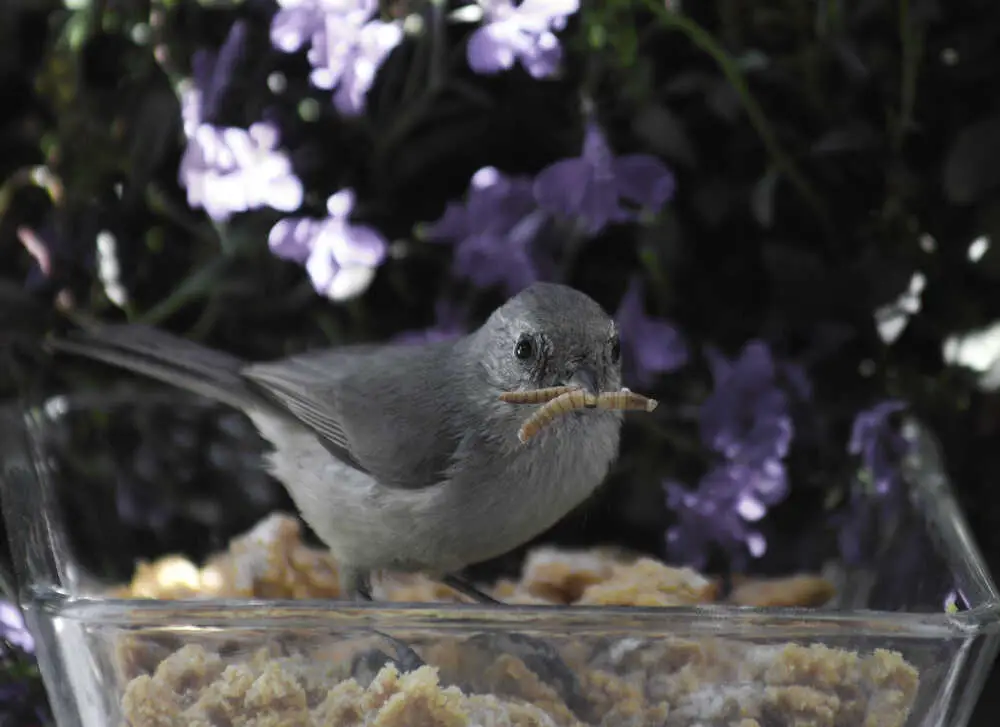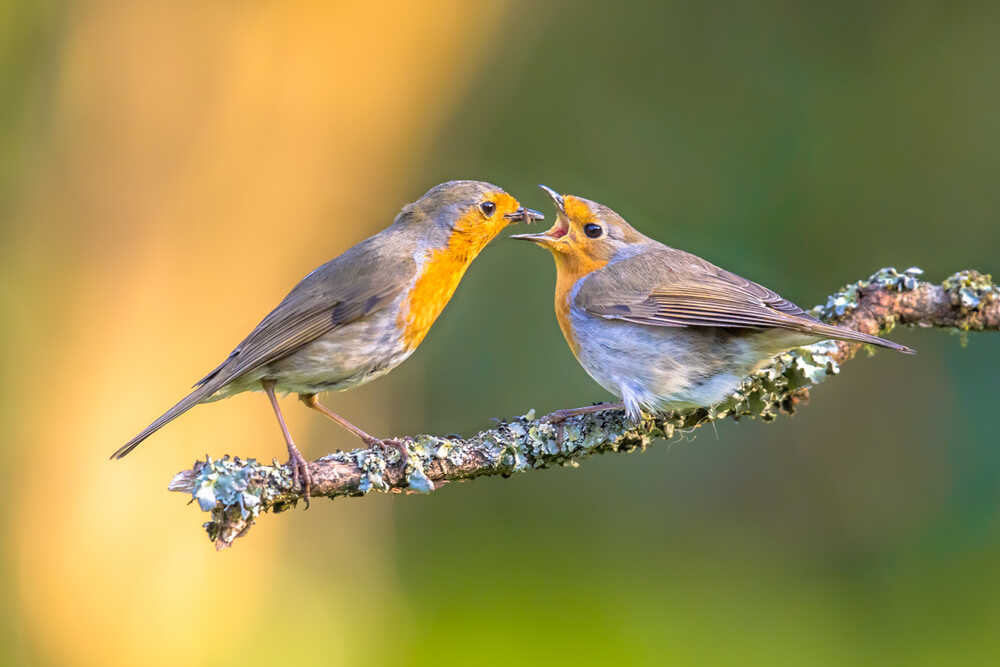If you’re a regular reader of mine, you will already be aware that I love to feed mealworms to some of my feathered friends. In particularly, Christopher, my returning robin who eats them from the palm of my hand.
I leave little piles of the wriggly little grubs out near to the house, just enough to watch my ever-present blackbirds enjoy a feast.
Other than these two, I wonder which birds eat mealworms, and should I be leaving them on the bird table?

Many species of birds enjoy mealworms, probably because they are a naturally-sourced, juicy treat.
Insectivores with their soft beaks and passerines (perching birds) are fond of the grubs.
Some members of the tit family, thrushes, sparrows, wrens, and siskins are among the species that happily visit the garden and partake in a few worms.
Table of Contents
What are mealworms?
Brace yourself; mealworms aren’t worms! They are the larvae of the darkling beetle. They remain in this form for a couple of months, even longer if you keep them refrigerated.
In cold weather, they can enter a semi-dormant state to further extend the larvae phase.
Mealworms are a rich brown colour and measure approximately an inch. If you’ve ever been fishing and seen a pot of wriggling maggots, picture those, but 2/3 times bigger and darker colour.

Which birds eat mealworms?
Many songbirds enjoy mealworms, including;
- Robins
- Blackbirds
- Blue tit
- Great tit
- Long-tailed tit
- Wrens
- Dunnocks
- Blackcaps
- Thrushes
- House sparrows
- Starlings
- Siskins
Surprisingly, greedy birds such as pigeons and doves that usually eat anything and everything, aren’t fans of mealworms. They are granivorous birds and need to be ravenous before they’d consider eating mealworms.
Why do birds eat mealworms?
First of all, they are natural. In the wild, birds have to hunt and forage for nutritious and meaty snacks, mealworms are laid out on a platter for them.
They are naturally high in protein, even the dried ones are around 50% protein and 25-30% fat. They are tasty, substantial and filling for the birds, giving them enough energy to
survive cold winter nights.
Can you feed mealworms to the birds all year round?
Mealworms are a great supplement to birds diets at any time of year.
During winter, when other natural food sources are scarce, mealworms provide birds with valuable nutrition that they wouldn’t otherwise get from fruit and seeds.
During the breeding season, adult birds need to take on board as much protein and fat as possible to keep their energy levels up. It is a busy time for them, what with nest building, rearing their young, and protecting them from predators.
Mealworms are one of the few things from the bird table that adults can safely feed their nestlings. They are natural and nutritional for the babies, but live ones are best as chicks don’t drink water for some days.
Where to put mealworms for the birds
As they are a popular snack amongst many bird species, you can offer mealworms in several ways;
Ground feeders
Robins, thrushes, and blackbirds eat from the ground, so a dedicated ground-feeding dish is ideal. I scatter a few on the lawn or in a little pile, but only when I know the birds are around.
Live mealworms wriggle away quickly so only offer enough that they’ll eat in one sitting. Any leftovers will encourage rats, and they’re harmful to hedgehogs.
Hanging feeders
The more acrobatic birds such as the tits, siskins, and starlings readily eat from hanging feeders. Again, only offer enough to eat in that day, and take any leftovers indoors overnight.
Bird table
All other birds will dine on mealworms at the bird table. If you’re using live ones, put them in a smooth-edged bowl so they can’t make a run for it!
Which are the best, live or dried mealworms?
The birds don’t really have a preference, and both have similar nutritional value.
However, from personal experience, I find the cheaper dried mealworms to contain a high percentage of husk and very little worm.
If you buy better quality dried ones, they are easier to store as they don’t require refrigeration. Try and remember to soak them before putting them out; when rehydrated, they look more appetising and help to quench the bird’s thirst.
I prefer to feed live mealworms that I pick up from a pet store, but they are more expensive. I feel it adds a little interest for the birds when I scatter them on the lawn; the thrill of the chase!
Final thoughts
Many species of birds eat mealworms, but some devour them. I sprinkle a handful each day, some on the table but most on the ground. I have never, ever had to bring any indoors at night, it seems my blackbirds just can’t get enough.

Hi, found a nestling sparrow yesterday and have been feeding it soaked mealworms. It’s feeding very well and survived the night. Am I feeding it correctly and/or should I feed anything else.
Hello, I would recommend having a look on Youtube as there are a few videos of people feeding baby sparrows and give advice!
All of our lovely birds have stopped coming to our feeders despite my giving them lots of choice (!) and ensuring feeders are clean and food not gone mouldy. We hang them from our crab apple tree which is a lovely umbrella shape so provides good cover. We have large oak trees opposite our garden. We see squirrels, Jats, pigeons and Woidpeckers. The latter even used to come to our window-glass feeder! Now virtually nothing comes to feed anymore. Only occasional Coal and Great Tits but even they come less and less. I’m sure it must be the predators in the oak trees opposite. Boo hoo. I’m sad. I miss our lovely Goldfinches and Blue tuts. Even our Robin we rarely see now. Any advice please?
Its just a quiet time of year for birds due to the abundance of food available in the wild, be patient they will come back!